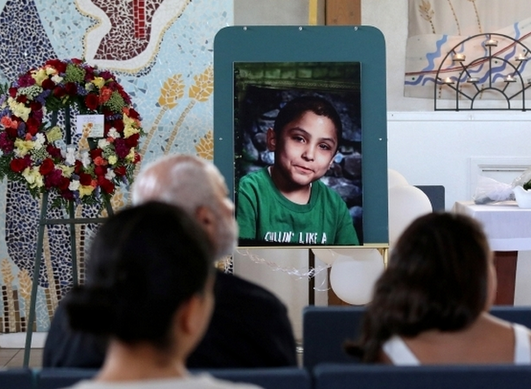An L.A. Journalists’ Investigation
The Atlantic has published an investigation that exposes the failure of Los Angeles County child-protective caseworkers to protect Gabriel Fernandez, an eight-year-old under their watch who was murdered by his mother and her boyfriend in 2013 after suffering many months of torture and abuse.
Journalist Garrett Therolf, who reported on Gabriel’s death for The Los Angeles Times, spent the past year retracing the details of this case. “Why Did No One Save Gabriel?” is now published at TheAtlantic.com.
What Therolf uncovers is a series of stunning incompetencies and fatal lapses by the Los Angeles County Department of Children and Family Services. Still more, he reports that 143 other children in Los Angeles County have died since January 2014 from abuse or neglect after prior history with DCFS.
Gabriel’s death has resulted in a landmark case that could send four of his caseworkers to prison, something that experts believe has never happened in American history. If prosecutors win a conviction, it could also dramatically change the way thousands of other child abuse investigations are conducted.
He writes: “The fact that Gabriel’s suffering went unaddressed by the people charged with protecting him was a staggering failure. … During the seven months when caseworkers were ostensibly watching over Gabriel, evidence of his abuse steadily accumulated. Yet time and again, they failed to intervene.”
Therolf, a reporter for UC Berkeley’s Investigative Reporting Program and Common Sense News, went to great lengths to obtain records and details in Gabriel’s case and interview those with the closest knowledge of his story and his suffering: Gabriel’s first-grade teacher, Jennifer Garcia, who again and again reported obvious and brutal signs of abuse to DCFS; and one of the caseworkers standing trial, Greg Merritt. Therolf’s reporting shows DCFS skirted protocol, were incompetent in interviewing Gabriel’s parents, ignored Gabriel’s suicide notes and other calls for help. When Gabriel’s mother told one of his caseworkers she didn’t want to have any further involvement with the agency — the caseworker accepted her decision. Two months later, Gabriel was tortured one final time by his mother and her boyfriend.
At the heart of The Atlantic’s investigation are the questions of accountability, and of what reforms are needed to prevent such unthinkable failures by child-welfare services. Therolf reports that, at the trial for Merritt and his colleagues, the judge said “each should have noticed that Gabriel was in danger and filed a petition for his removal from the home, or at least ordered a medical examination. They could have communicated with one another better, or pulled up the case history in the computer system. They could have properly documented Gabriel’s injuries. ‘Red flags were everywhere,’ she said. ‘They acted in a way that was “incompatible with the proper regard for human life.’”
This is a story that highlights how the domestic violence movement has left children behind.
Read “Why Did No One Save Gabriel?” at TheAtlantic.com.

